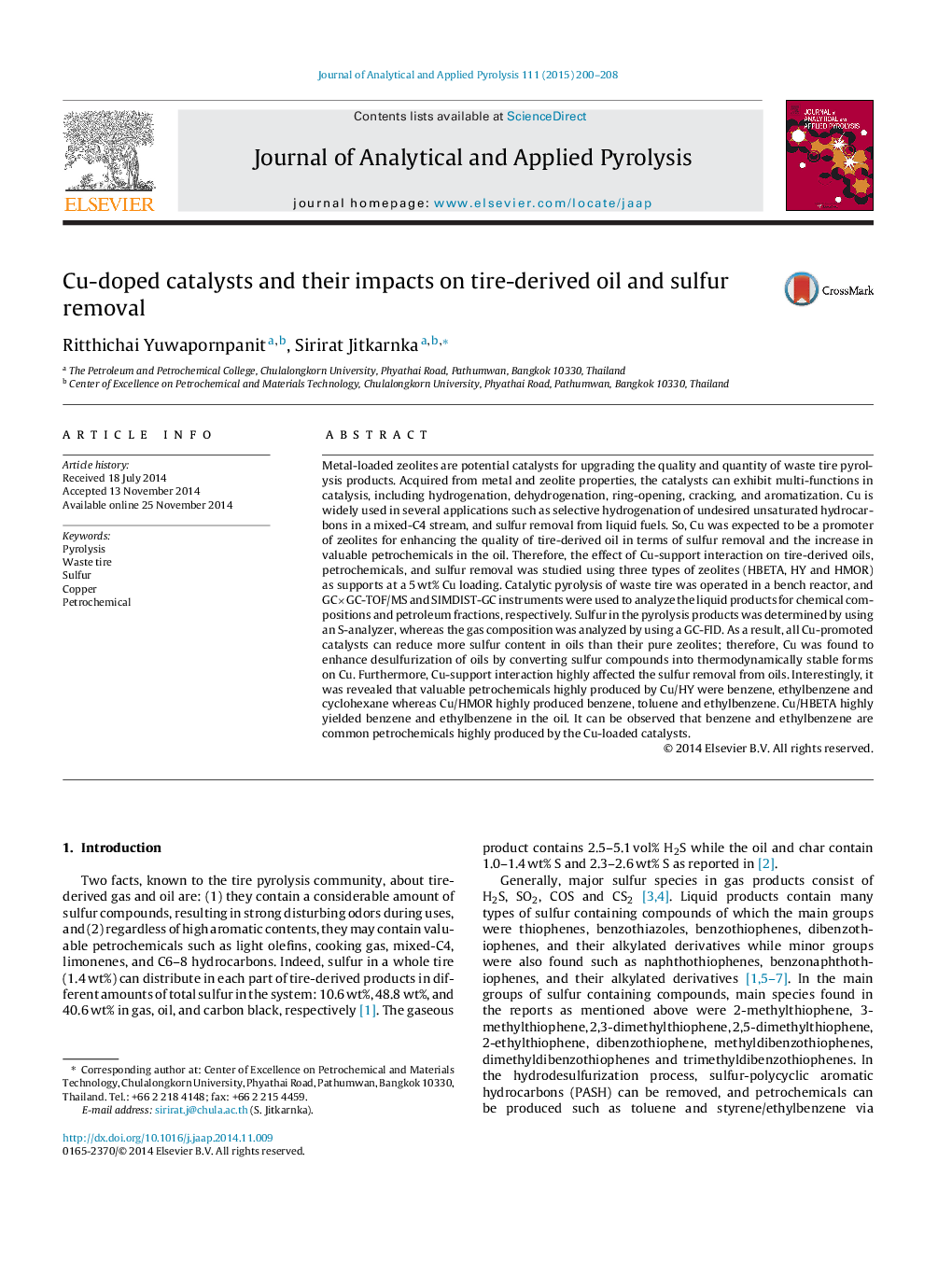| کد مقاله | کد نشریه | سال انتشار | مقاله انگلیسی | نسخه تمام متن |
|---|---|---|---|---|
| 1196718 | 1492966 | 2015 | 9 صفحه PDF | دانلود رایگان |

• Impact of Cu and support on tire-derived oils, petrochemicals and sulfur removal.
• HBETA, HY and HMOR used as supports with a 5 wt% Cu loading.
• Enhancement of sulfur removal from tire-derived oils by Cu catalysts.
• Benzene and ethylbenzene were common chemicals produced by the Cu catalysts.
Metal-loaded zeolites are potential catalysts for upgrading the quality and quantity of waste tire pyrolysis products. Acquired from metal and zeolite properties, the catalysts can exhibit multi-functions in catalysis, including hydrogenation, dehydrogenation, ring-opening, cracking, and aromatization. Cu is widely used in several applications such as selective hydrogenation of undesired unsaturated hydrocarbons in a mixed-C4 stream, and sulfur removal from liquid fuels. So, Cu was expected to be a promoter of zeolites for enhancing the quality of tire-derived oil in terms of sulfur removal and the increase in valuable petrochemicals in the oil. Therefore, the effect of Cu-support interaction on tire-derived oils, petrochemicals, and sulfur removal was studied using three types of zeolites (HBETA, HY and HMOR) as supports at a 5 wt% Cu loading. Catalytic pyrolysis of waste tire was operated in a bench reactor, and GC×GC-TOF/MS and SIMDIST-GC instruments were used to analyze the liquid products for chemical compositions and petroleum fractions, respectively. Sulfur in the pyrolysis products was determined by using an S-analyzer, whereas the gas composition was analyzed by using a GC-FID. As a result, all Cu-promoted catalysts can reduce more sulfur content in oils than their pure zeolites; therefore, Cu was found to enhance desulfurization of oils by converting sulfur compounds into thermodynamically stable forms on Cu. Furthermore, Cu-support interaction highly affected the sulfur removal from oils. Interestingly, it was revealed that valuable petrochemicals highly produced by Cu/HY were benzene, ethylbenzene and cyclohexane whereas Cu/HMOR highly produced benzene, toluene and ethylbenzene. Cu/HBETA highly yielded benzene and ethylbenzene in the oil. It can be observed that benzene and ethylbenzene are common petrochemicals highly produced by the Cu-loaded catalysts.
Figure optionsDownload as PowerPoint slide
Journal: Journal of Analytical and Applied Pyrolysis - Volume 111, January 2015, Pages 200–208